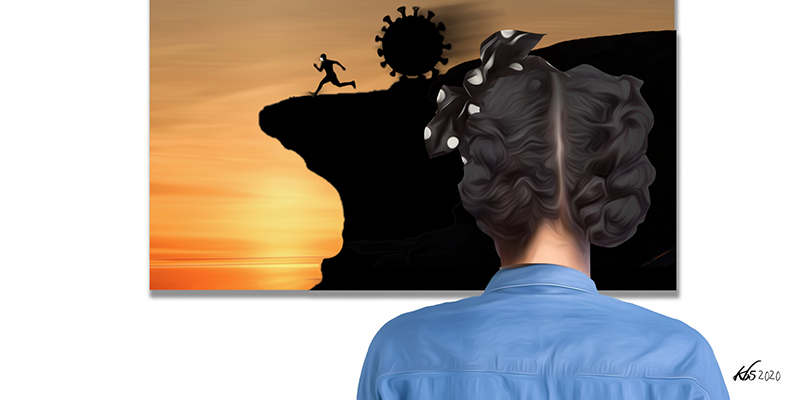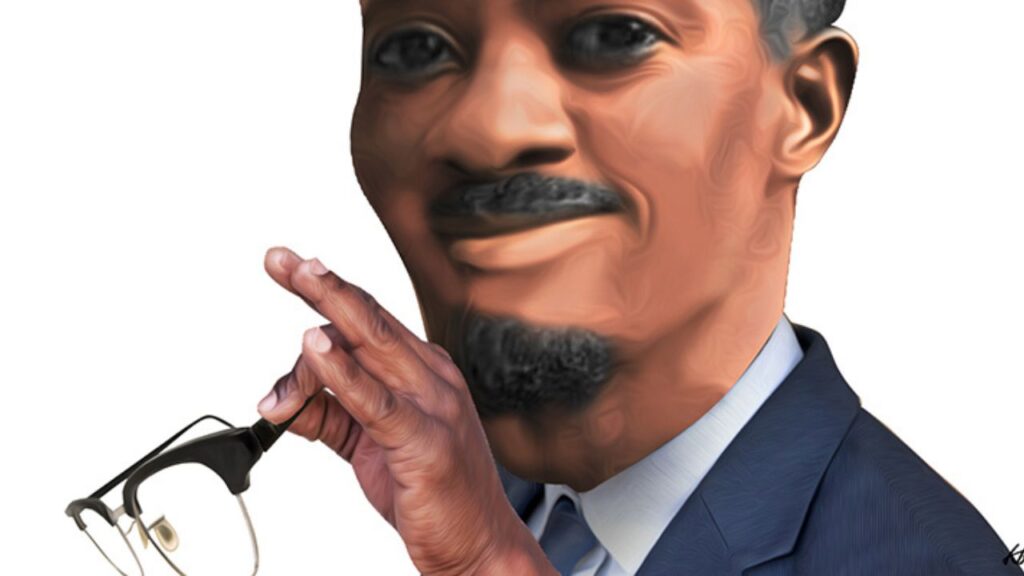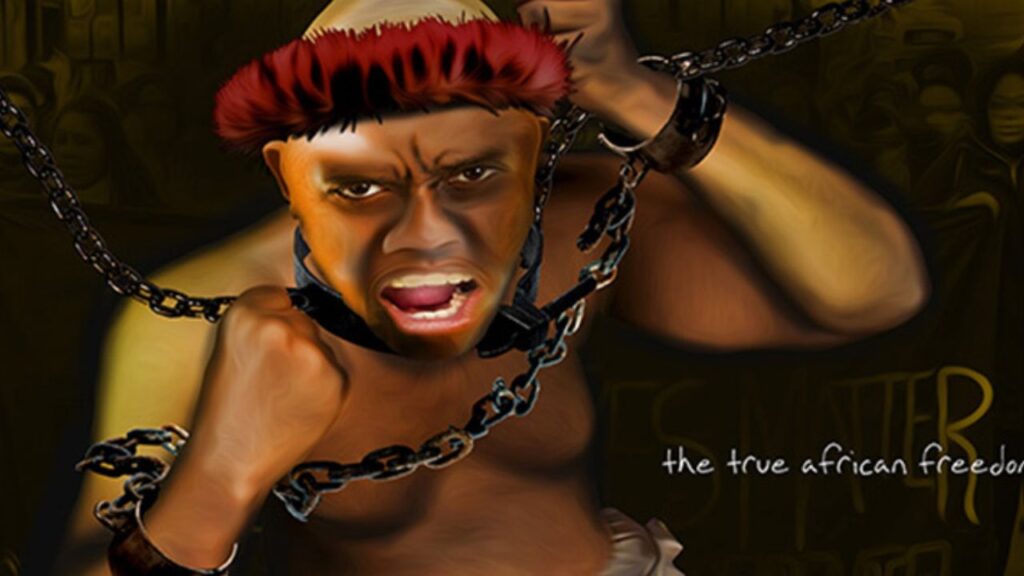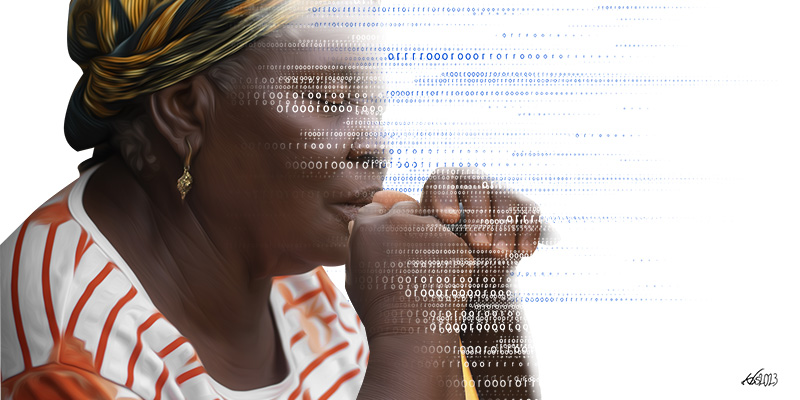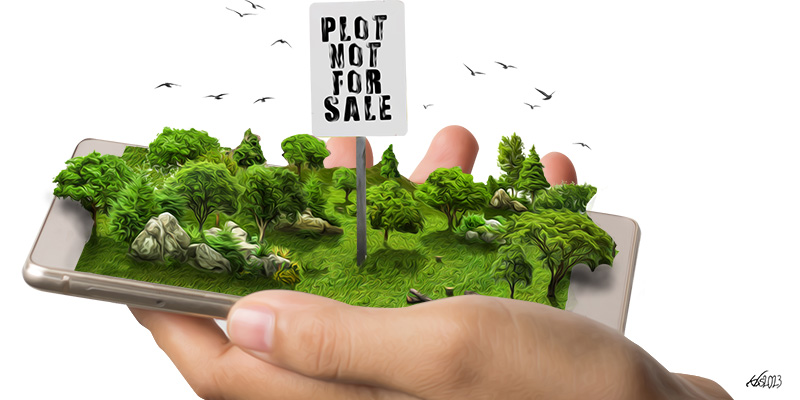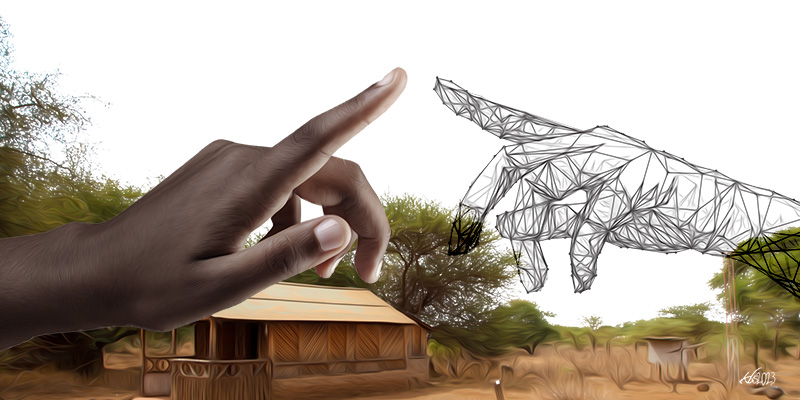Criticism of President Uhuru Kenyatta’s announcement of Sh200 million monthly payouts to artists has centred on mistakenly equating the immediate needs of healthcare workers at the front line of the battle to beat the coronavirus with paying royalties for creative work. This announcement came on the back of his order to lock in Nairobi, Mombasa, Kilifi and Kwale counties.
Completely missed in the ensuing furore was the fact that Kenyatta was only reporting progress on an earlier pledge, when he said: “My administration has projected that a total of Sh200 million every month will be paid to musicians through the system and other platforms. This translates to over Sh2 billion going into the pockets of Kenyan artists. These payments will begin this week in line with the pledge that I made in January.”
Should the president have used the same platform announcing measures to address the crisis, such as setting up of a National COVID-19 Emergency Response Fund, getting the seed capital for the Fund from the Exchequer, taxation, and pay cuts to assure the country of continuing entertainment from artistes?
The arts during the HIV/AIDS epidemic
Entertainment is the visible contribution the arts make, but recent local history is replete with examples of how music, performance theatre, literature and visual arts have enabled conversations that built a shared understanding of complex problems to enable the people to find solutions. Song, dance and theatre modelled on the Latin America experience around theatre for development have helped Kenya to confront poorly understood phenomena like the HIV/AIDS pandemic, chipping away at stigma and bringing hundreds of thousands of infected people into care and treatment to blunt its effects on the affected and reduce its impacts on society.
“When one speaks of health communication using art and the role of artists, several creative pieces in different genres come to mind,” Oby Obyerodhyambo, a public health professional and leading author, playwright, actor, noted in an interview. “I think of songs such as Todi by the late Oliver Mutukudzi, Dunia Mbaya by Prince Julie, Attention na SIDA by the late Franco Luambo Makiadi. I am reminded of the images of the late Philly Lutaaya descending the flights of stairs at Entebbe for the last time after he had broken the stigma about HIV in Uganda several years earlier using his music. Music and musicians played a major role in raising awareness about HIV when all that people knew about HIV was the death. Music was not best in terms of providing detailed information about the health continuum from the transmission to treatment but played a huge role in breaking the silence about HIV. The mention of the word UKIMWI was eased by songs like Dunia Mbaya increasing community discourse on HIV was greatly aided by art and artists.”
Awareness of how to deal with HIV/AIDS was not done through music alone. There was theatre that provided more latitude for a detailed description of the virus, its behaviour and its impact on life.
“However, theatre had a terrible history,” Obyerodhyambo pointed out. “The journey started with the horrific play, Tone kwa Tone, that was among the first HIV dramas staged in Kenya. It was grotesque; diabolic images of skulls, blood dripping, coffins and HIV depicted as a devil, coffins and promiscuity and immortality associated with HIV. The typical play showed the Simon Makonde story of infected today and dead in seven days marked by intense suffering. This enhanced stigma to a very high level.”
Awareness of how to deal with HIV/AIDS was not done through music alone. There was theatre that provided more latitude for a detailed description of the virus, its behaviour and its impact on life.
Nonetheless the power of using theatre was clearly noted and was thereafter followed subtler plays on HIV, such as Positive Identity written by Oby Obyerodhyambo using the pseudonym Rangóndi Othuon that also won the Okoth K’Obonyo Playwriting Competition that used to be organised by Theatre Workshop Production.
There were several other plays by JPR Ochieng’Odero taken around the country under AIDSCAP project. This USAID-funded programme morphed into the countrywide Theatre for Development or Magnet Theatre projects under the aegis of PATH and FHI. Thousands of shows were staged by the troupe of artists using a Forum Theatre approach inspired by Paulo Freire and Augusto Boan techniques. Around this time we also had Maisha ya Nuru where radio soaps and radio magazine platforms were used.
“At this point, the main role of art/artists was – raise awareness of the REAL cause of HIV and AIDS, promote preventive behaviour (Abstinence, Reduction of Sexual Partners and Condom use),” said Oby Obyerodhyambo, who was at the centre of it all while working with PATH. “It was used to reduce HIV stigma, promote acceptance of PLWHIV [people living with HIV] and promote community dialogue around HIV and AIDS to de-mythologise HIV and give hope to families of PLWHIV (mainly that avoiding opportunistic infections could prolong lives). At this point there were plays that taught that an infected person should prepare for death – there were the Memory Projects with scrapbooks. This was before the advent on ARV [antiretrovirals]. Theatre promoted testing and many people got to know their HIV status courtesy of Magnet Theatre – the MT that we did at PATH would have a very tight referral for HIV testing.”
Apart from theatre and music, graphic art also played a major part, especially the Talking Walls projects where murals were used to engage the community in dialogues. These murals travelled a long way from the grotesque images. In some places, these images can still be seen. Art provided a stark reminder of the ravages of HIV, but also promoted stigma by negative portraying PLWHIV. There were posters that played the same sort of role.
The International Planned Parenthood Federation (IPPF) trained puppeteers and promoted the use of life-size puppets. These travelling, life-size puppet shows were the firsts attempts to objectify the disease with non-real characters who could discuss HIV and being HIV-positive and who could explore real taboo subjects. Puppets actually were the first ones to bring caricature and humour into the portrayal of HIV and AIDS. Their role has been underplayed. Using puppets, the stigmatisation of PLWIV and the mystery around HIV was reduced.
Similarly, these arts— Theatre for Development/Participatory Education Theatre— unlocked emotive conversations in the long search for a new order, contributing to securing Kenya’s constitution-making as one of the most participatory processes in the world.
“The conscientisation of Kenyans towards a new public awareness and education came to the fore in the early 90s with the advent of political pluralism,” Kawive Wambua, an artists and governance expert noted in a seminal paper, “The Artists as the Managers of the Political Transition in Kenya”, presented at the Kenya Oral Literature Association (KOLA) Conference on East African Oral Literature in Kisumu in 2005. “CSOs [civil society organisations] such as Kenya Human Rights Commission (KHRC), Citizens Coalition for Constitutional Change (4CS), Legal Resource Foundation (LRF), Centre for Governance and Democracy (CGD) and CLARION commissioned plays to be written and engaged artists to go around the country popularising such ‘taboo’ issues as human rights, good governance and rule of law.”
Wambua noted:
Plays that were significant in the 1990s, were such as Professor Kivutha Kibwana’s Kanzala, Wakanyote Njuguna’s Kabla ya Dhoruba, Kithaka wa Mberia’s Kifo Kisimani, Wahome Mutahi’s Mugaathe Mubogothi, Makaririra Kioro, and Mugathe Ndotono among others. Though these plays lack specific merit as Participatory Education Theatre (PET) or even as Interactive Participatory Community Education Theatre (IPCET) texts, they were unconventional (some even compromising style for messagism) and they interrogated difference and diffidence in community leadership. These writers as well were prominent figures in the intellectual and human rights movements and hence had a lot of influence in the course of action on the educational theatre scene. Their plays, among others, were the precursors of the underground NGO movement that came up with the IPCET play. The individual and really forceful activities of civil society organisations like 4Cs, CGD, LRF and a plethora of other organisations suffered the same fate of being but information points for the community. Information, we should note at this point, empowers, but it is only communication that liberates. And this key issue was never sufficiently addressed. Art was severally massacred at the behest of militant advocacy.
“I would like to isolate the 4Cs and say that they started off as a loosely structured lobby group for constitutional reform,” Kawive Wambua added during an interview. “For three years, its single programme was theatre. The theatre group used the rich history of oppression in the country to create a play “Five Centuries”, later to become the name of the group. The play was an interrogation of the suffering and pain the people of Kenya have gone through in the hands of selfish leaders, the fact of an independence that never was, and the need for this century to be a century of nation reconstruction and a new constitutional order. This trend has survived across the years, at times faltering at the intersection of artistic expressionism and political advocacy.”
He noted: “It is clear that theatre mobilised citizens and led to the groundswell that bore the Change-the-Constitution movement of the late 90s. I have argued elsewhere that the change of government in 2002 was midwifed by artists – literally. Aforementioned groups and others such as 5Cs Theatre were instrumental in cultivating the language of rights and self-liberation by citizens from the government and by women from the clutches of patriarchy. In the mid and late 90s also Theatre for Development (TfD), Participatory Education Theatre (PET) was being used for reproductive health education and HIV and AIDs awareness. CARE-Kenya and other non-profit outfits were big on theatre as a primary methodology of Behaviour Change Communication (BCC). This was to continue in 2003 onwards with Magnet Theatre projects all over Kenya.
“It is clear that theatre mobilised citizens and led to the groundswell that bore the Change-the-Constitution movement of the late 90s. I have argued elsewhere that the change of government in 2002 was midwifed by artists – literally…”
In the run-up to the 2002 election, Gidi Gidi, Maji Maji’s popular song We Are Unbwogable became the rallying call for the nation’s new heroes Those people who had been frustrated by the regime and its machinations came together and sought artists to ignite the fire that would stamp them with confidence and endear them to the electorate. Another song, Yote ya Wezekana, a popular gospel tune, was used to appropriate the political mood and to whip up the mood and empathy of the people from the apparent defeatism and lethargic complacency that had enveloped them after three subsequent defeat upon defeat of those that seemed to be conscientious leaders faced by the misuse of state machinery and resources.
From disease comes great art
“Art has a way of objectifying reality and therefore making difficult topics discussable. This was clearly the case with HIV because of the preponderance of sexual transmission,” Oby Obyerodhyambo pointed out. “Art very effectively made it possible to discuss the issues around HIV and suggest the steps that could be taken to cope. Objectivity through depiction in art and film such as the iconic movie Philadelphia where Tom Hanks and Denzel Washington dealt with the issues of human rights and stigma associated with HIV. Art and artists worked through their creative expression to raise awareness of HIV; build knowledge about the disease – its transmission, diagnosis, management and prevention strategies and removing myths that fuelled stigma and discrimination; created a more receptive environment by famous musicians coming out as Lutaaya did; then there were those who drew crowds by their fame and did edutainment shows – Prince Jully, Ochieng’ Kabaselle, (many in local languages) and big names like Franco Luambo Makiadi with Attention na SIDA.”
“The spectre of disease, pandemic, and death have been with us since life emerged on this rock. And once we got around to discovering music, homo sapiens (and perhaps Neanderthals, whose numbers were probably drastically culled by disease), began reacting to these periods of widespread sickness with stories, art, and song,” writes Allan Cross, a broadcaster and a commentator for Global News.
Utilitarian art that responds to the crisis of the moment certainly has its uses, but when the crisis of the coronavirus is behind us, it is to the songs, the theatre and the stories from this epoch that Kenyans will look for a reflective history of their experience.
“The first recorded pandemic hit the people of Athens between 429 and 426 BC,” Cross writes. “No one knew why, other than the gods must have been displeased with mankind. We still don’t know what caused the death of up to 100,000 — Typhus? Typhoid Fever? Some sort of viral hemorrhagic disease? — but it left an unusual mark on the city. Those were the peak years of Greek tragedy, a form of theatre that had tremendous influence on both ancient Rome in a few centuries and the Renaissance more than a thousand years in the future. From disease came great art.”
Science is moving at great speed to educate us about the coronavirus, how it spreads and ways to contain it, which require changes that cannot be enforced by official diktat alone. “The Black Death killed majority of the population in Florence in 1348 (and maybe as much as 60 per cent of all of Europe between 1331 and 1353) yet Florence rallied, becoming a flashpoint of intellectual and artistic evolution that was felt for centuries,” Cross adds. “London was plagued through much of the 16th century and King Henry VIII was forced to self-isolate during the Sweating Sickness of 1529, much in the way we are today and saw a spike in fatalities in the early 1600s. But as England slowly recovered, Shakespeare was somehow inspired to write King Lear, Macbeth, and Antony and Cleopatra, all in 1606.”
Utilitarian art that responds to the crisis of the moment certainly has its uses, but when the crisis of the coronavirus is behind us, it is to the songs, the theatre and the stories from this epoch that Kenyans will look for a reflective history of their experience.
Exploring these tragedies, the deprivations they visit upon society and the adaptations that are required to survive is a matter of emotional persuasion as it is of logic. “The artist provides society with emotions, colour, and texture. Scientists think up of ways to make life easier, builders and technicians turn those scientific ideas into tangible objects. These things help us – they blend our foods, put roofs over our heads, make mowing the lawn easier – but they never add real emotion. Artists come in to play on our emotions and subconscious thoughts,” notes Andre Deherrera, a creator/artist for AndreDDesign.
Aziza Atta, founder of Ozoza Lifestyle in Abuja, notes: “Art is the natural way in which we create relationships in the world and also where we build life experiences. Being an artist is to express one’s soul. The responsibility of the artist is to consciously bring about an internal change within us. We cannot bring to the world what we have not ourselves internally absorbed, digested and assimilated. It all starts in the heart and in the mind. Through its emotional outreach, art can affect these transformations. It is a powerful force.”
Besides artists being direct taxpayers, they are also consumers. In a streamlined and transparent system, paying artists the over Sh2 billion (about $20 million) owed to them each year can take away a great deal of pressure on the state to provide relief.
The culture and creative industry
Tapping into the potential of the creative economy can turn artists into significant cogs that build a nation’s resilience, beyond just contributing to the national gross domestic product. There is no doubt that this president the others before him have not given the culture and creative industry (CCI) the attention it deserves. However, Uhuru Kenyatta and his team have suddenly woken up to what the CCI stakeholders have been taking about. Gains about the CCI are well documented in reports such as the “Ubunifu Report on the Status of the Creative Economy in East Africa”, the Pricewaterhouse Coopers (PwC)ianalysis report on the trends shaping the entertainment and media industry in South Africa, Nigeria, Kenya, Ghana and Tanzania, dubbed “Getting Personal: Putting the Me in Entertainment & Media: Insights from the Entertainment & Media Outlook: 2019–2023 An African Perspective”, and many other related industry reports.
Champions for CCI have included none other than Hon. Dr Mukhisa Kituyi, the Secretary- General of the United Nations Conference on Trade and Development (UNCTAD), through numerous reports and recommendations and conferences, such as the one that led to UNCTAD’s Nairobi Maafikiano 2016.
In its report, UNCTAD observes: “Trends show the ‘creative economy’ can cultivate meaningful work, make money and help deliver prosperity for all. The creative economy, in some ways, defies definition almost by definition. But its significant 3% contribution to global gross domestic product (GDP) makes it a powerful emerging economic sector that is being strengthened by a surge in digitisation and services.”
Since 2004, UNCTAD has analysed creative industries, providing important insights into its global dimensions. UNCTAD’s Creative Economy Programme, whose focus is on trade in the creative industries, has placed the arts on the world economic and development agenda by imagining a role for them in the growth of developing economies. Its data on trade in creative goods and services provide important insights for understanding the creative economy at a time when many emerging and developing economies are seeking to diversify.
“The creative economy and its industries are strategic sectors that if nurtured can boost competitiveness, productivity, sustainable growth, employment and exports potential,” notes Pamela Coke-Hamilton, UNCTAD’s international trade and commodities director.
The creative economy leverages creativity, technology, culture and innovation in fostering inclusive and sustained economic growth and development. Creative economy sectors include arts and craft, books, films, paintings, festivals, songs, designs, digital animation and video games. They generate income through trade (exports) and intellectual property rights, and create new jobs in higher occupational skills, particularly for small and medium-sized enterprises.
UNCTAD’s second report, Creative Economy Outlook and Country Profile Report 2018, notes that the “size of the global market for creative goods expanded substantially more than doubling in size from $208 billion in 2002 to $509 billion in 2015.”
In this report, it was noted that the “creative goods exports from Kenya stood at $40.9 million (Sh4.3 billion) and imports at $195 million (Sh20.6 billion) in 2013, the last year for which data was available. Besides the performing arts, visual arts and cultural heritage, Kenyans produce films, videos, television and radio shows, video games, music and books. There is important work being undertaken in the graphic design, fashion and advertising subsectors. These creative activities need to be anchored in political and governmental commitment and concrete support.”
Government commitment and concrete support through the streamlining of the Kenya Copyright Board (KECOBO) and Collective Management Organisations (CMOs) by streamlining the sector can deliver benefits for artists but can also open a new revenue stream for government. In January this year, President Kenyatta directed that KECOBO license digital platforms run by telecommunication firms and media companies to channel payments of royalties to the three CMOs “in order to ensure compensation for all generators of the works”.
In this report, it was noted that the “creative goods exports from Kenya stood at $40.9 million (Sh4.3 billion) and imports at $195 million (Sh20.6 billion) in 2013, the last year for which data was available.
“Content Service Providers who work with digital platforms such as Skiza and Viusasa, will be eliminated because they sit outside the CMOs,” President Uhuru said. “My practical direction on this is to have all rights holders register on the National Rights Registry.”
Additional funds totalling Sh100m from the Ministry of Sports, Culture and Heritage are also to be made available from the Sports Fund during the period of the COVID-19 pandemic.
“These new measures will see the rise of tariffs collected and will create immense savings on the processes of collecting royalties,” he added. “It is estimated that the new system will see an increase in collections from a previous Sh200 million per year to an estimated Sh2 billion per year, a tenfold increase.”
The ministry’s perennial underfunding over the years and its general poor performance mean that they need to be watched closely to turn the order into reality. The coronavirus crisis also presents an opportunity. President Kenyatta has ordered KECOBO to gazette new tariffs within 30 days and ensure that public service vehicles, the hospitality industry, and broadcasters apply them.
The arts and COVID-19
The State House Choir has already showed that artists are going to be significant cogs in the fight against COVID-19. Like in the past, artists in various genres will need to come on board to help deal with numerous issues around COVID 19.
“I suggest that art could be used to respond to the misinformation or disinformation about COVID-19 and coronavirus,” Oby Obyerodhyambo pointed out. “To present the facts in a very easy and understandable way that our grandmothers and children under 5 can understand – unlike HIV that was so stigmatising because it involved sex among others this one is less inhibiting. However, it goes to the very core of our cultural practices so we need to explain why we need to social distance, stay at home and be careful about what we touch – to demystify the preventive procedures including donning of masks.”
He added: “We are social animals and greet and hug a lot. We are a ‘touchy’ culture so the idea that we cannot touch – shake hands – is harder than avoiding sex. Basically we are telling people to dehumanise themselves. We can use the art of humour to do this and create a way that we can laugh at this again because it is not as difficult as abandoning sexual partners. Over that we need art to explain the logic of doing what we are doing.”
Through art, we will explain the lockdown so that the punitiveness of it is explained. The idea of curtailing freedom to move and interact is difficult to explain unless some counter-narrative is spun. We must explain to the man or woman who cannot go to the farm or market or visit his relatives how this is for his or her own good.
“Again, there is a need to reduce the fiat that the administration is adopting,” Obyerodhyambo added during the interview. “The ‘or else’ approach is counter-intuitive. How do you explain to me that going out to fetch food for my hungry children is for their own good? Artists need to rally the public around ownership of the response to corona. The way that the globe was galvanised around the movements like ‘Africa for Africans’ where funds were donated to support the victims of famine must be the approach. The arts must tug at the heartstrings of the population, we must show empathy and concern for one another.”
The role of the artist in the world after corona
No one best captures the hopes and aspirations of artists and the art world better than Dalen O’Connell, a theatre artist from Minnesota, USA, when the coronavirus chaos is finally contained. In a Facebook post, Dalen noted that in theatre “we have a tradition – whenever the theatre is empty, we are always sure to leave one light on. Typically on a stand in the center of the stage, this light is known as the ghost light. There are many stories about its origin- but it’s meaning is unmistakable. It means though the theatre is empty, WE WILL RETURN. So here’s to us. The actors, the technicians, the directors, the carpenters, the designers, the dancers, the teachers, the students, the freelancers, those on tour, those at sea, the electricians, the stitchers, the makers, the stage managers — THE ARTISTS. Many of us have taken big hits during this virus. Financial and emotional weights have come crashing down as our entire industry is reduced to nothing but a bunch of ghost lights. But those ghost lights are temporary place holders. They are a sign. We might be down now- but our passion, our creativity, our drive is still center stage. We will be unplugging those ghost lights in no time. Until then- here’s a ghost light – to let the world know we will be back.” (There was an accompanying picture of the ghost light).
Obyerodhyambo notes that there are hideous songs that have been produced by so-called artists telling people to wash their hands, sanitise, and keep social distance. Most of them are very hurriedly done and lack any artistic flair. After COVID they will remain uninspiring and irrelevant.
He notes: “There is no artistic rendition carrying the questions that society is grappling with such as: Where is the money donated by all manner of people going? Why are our facilities so decrepit and our health care professionals unprotected? Why is COVID weaponised so that the police are killing Kenyans in enforcing the Public Health Act and the curfew? Why is the donated testing costing 10,000 shillings and why are people being charged for being quarantined in places they did not choose? Why are police officers corruptly landing people in quarantine? And why are come counties giving masks and why are politicians branding donated hand sanitisers and getting away scot-free?”
“The role of artists DURING the crisis should be of interest because if they are the moral compass and mirror they should be asking these difficult questions,” Oby added during the interview. “Artists should be questioning why Kenyans still do not wear masks and are not physically distancing? Why are people sneaking in and out of the locked-down cities? There should be messages of self-reflection and introspection. Do the artists actually understand the public health issues at play? Can they be allowed to pass on the message they do not understand?”
Like the proverbial Phoenix, artists believe the industry will rise once again and take its place in society – as entertainers, educators and tax payers.
Obyerodhyambo notes that there are hideous songs that have been produced by so-called artists telling people to wash their hands, sanitise, and keep social distance. Most of them are very hurriedly done and lack any artistic flair. After COVID they will remain uninspiring and irrelevant.
“I believe, like Okot p’Bitek, the artist is the ruler,” Kawive Wambua pointed out in a conversation when this article was being written. “Artists have already unravelled the coronavirus and are crooning from YouTube on what the pandemic means for us. They interpret it and entertain at the same time. In the post-corona period, they will puck the husks of our lives and relive our lives on stage, talking about love gone and death visiting but unwanted. They will create for us a log of memory as they help us reflect and recreate a new world – where wealth and power are demystified and life glorified. They will help us imagine a new world.”
In Kenya, the Building Bridges Initiative (BBI) envisages artists and cultural workers playing a key role in re-engineering our society. It envisages the resourcing and revitalisation of the Ministry of Culture, Arts and Sports to take lead in the rebuilding process. Advocacy and education work using art that will even entail coming to terms with the post-COVID realities will be critical.
The government will need to move beyond talking and tokenism in its effort to strengthen the culture and creative industry. Research shows that this is the next frontier for growth, but there is need for sound investment in the right legal and policy frameworks, financial and human resources, technology, strengthening institutions and associations, among others.
“Double-digit growth is anticipated for Kenya,” the PwC-backed Insights from the Entertainment & Media Outlook: 2019–2023 An African Perspective notes. “Kenya’s E&M market is set to see growth at a 10.3% Compound Annual Growth Rate (CAGR) over the next five years, reaching nearly US$3.0 billion in 2023. In 2018 the market rose by 13.0% year-on-year to make US$1.8 billion.”

